Story By Justin Morris | Photos By Jason Carroll
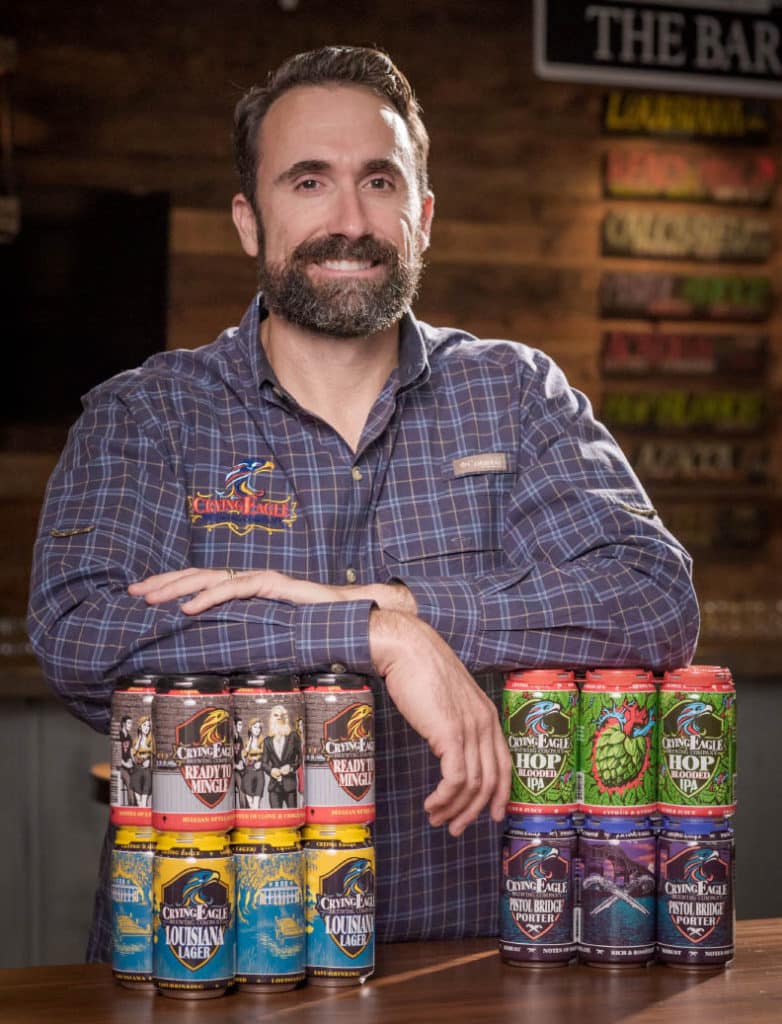
I will drain that glass again.
Such hilarious visions clamber
Through the chambers of my brain.
Quaintest thoughts — queerest fancies,
Come to life and fade away:
What care I how time advances?
I am drinking ale today.”
— Edgar Allan Poe
There is admittedly something about passing a carefree afternoon with a pint of bitters, lager or the like in one’s hand. It’s evident, both in the ruminations of the great writers and thinkers of days gone by (such as that of the sad-eyed Bostonian referenced above) and in the current size of the beer industry and its annual sales numbers and volume domestically and abroad.

Even our humble little burg has joined the ever-growing list of communities to have these wort-wrangling mash masters throwing up kettles, fermenters and bright tanks to crank out some specialized suds, practically in their own back yards.
The 2016 arrival of Crying Eagle Brewing Company added us to those ranks. It has since moved its initial brands into the local community and neighboring markets. The facility itself has become its own little hub of events and activity for beer geeks and non alike.
The man at the helm is Crying Eagle Brewing Company president Eric Avery. Sulphur-born and -raised, he studied biology and chemistry at McNeese with the intention of pursuing medicine. After not making it into med school, he headed off to LSU to major in biochemistry with the goal of giving med school another shot. He had the same misfortune.
So Avery chose a new path: that of the family business, which was, at the time, a number of climate-controlled storage facilities here at home — the first of their kind in the area, in fact. Those businesses led to the opening of Avery Archives, their document storage, management and shredding business in 2003.
But how does one go from storage facilities to jumping on the rising tide of craft breweries? That move, Avery tells us, was first proposed by his father, Larry Avery (of Big Easy Foods), many years ago.
“My father had a vendor that did floor coatings mention that he was starting a brewery outside of San Antonio,” Avery says. “So, he one day said, half-jokingly, ‘You know, we need to think about opening up a brewery.’ I was like, ‘You’ve lost your mind. I don’t know the first thing about that.’
“Honestly, I wasn’t even that much of a beer drinker back then. So, at first, I laughed it off and just carried on, until my brother-in-law exposed me (to craft beer). He’s a big craft beer junkie from Atlanta, and that’s all he was into — beer and breweries. So, he got me drinking, and I found that I did like beer.
“Beer is supposed to have flavor, you know? Then you start experimenting with different beers, and next thing you know, you find that you like lots of different styles of beer: dark, hoppy — all sorts of different stuff. But that still didn’t mean that I wanted to open a brewery.
“I later went to Houston for the bachelor party of one of my best friends. One of the stops was St. Arnold’s Brewing. It was there that I became completely and totally — absurdly — fascinated with breweries. I fell in love with the engineering; the social dynamic that was a part of breweries themselves.
“It didn’t matter whether you were black or white, what your religion was, what you did for a living, or how much money you made or had, everybody just unified over a pint of beer there.
“Every brewery I’ve been in is full of culture, and has beers named after cultural things around their area; or their name is associated with some part of their local heritage — just like we did with Crying Eagle.”
So, Eric and his dad Larry started diving into the world of craft breweries and touring the world visiting them and learning everything they could in the process. They invested the better part of five years, in fact, in doing this: analyzing equipment needs and scouting locations that they thought would be suitable to house their boozy venture.
Another thing they spent a great deal of time (and money) on was researching what the name of the brewery would be. They pursued Avery Brewing and found it was already taken by a very successful brewery in Colorado. Sugarcane Bay was an option as well, but Pinnacle Entertainment wouldn’t give it up. Pelican, Contraband, Jean Laffitte — these and many other names were weighed. But one kept coming up that Eric just couldn’t get away from — the Native American translation of Calcasieu: Crying Eagle.
But there was a problem.
“Late one night, a few weeks after we had decided on that name, I got a phone call from one of my friends and partners in the brewery, and he told me that he had heard someone else was looking to open a brewery in town, and not only that, they were actually planning on calling it Crying Eagle Brewing. I was like ‘Are you kidding me? This is unbelievable!’
“So, the very next morning, we got our attorneys and accountants together; we got on social media with it; we trademarked the name; officially started the company; locked down accounts on all the social media platforms; got all the websites — everything — within two hours.
“Once we got everything out there and officially announced, I get a call from a guy who looked like he brewed a lot from his Facebook page. He wanted to meet with me. So, we had a meeting and start communicating. Turns out this guy was the same guy who was looking to open the ‘other’ Crying Eagle. His name was Bill Mungai.”
Brew fans in the area are surely familiar with that name by now. A longtime home brewer and member of the local homebrewers club, Bill was looking to “go pro” himself downtown, with the help of local business owners Nick Villaume and Rick Richard. But after meeting with Avery, Bill and Eric decided that each of them was exactly what the other needed. Bill needed Avery’s equity and good business sense, and Avery needed a brew master. Whether or not it was destiny is up to your discretion, but the two joined forces and have been cranking out Crying Eagle beer ever since.
Despite this nearly serendipitous beginning, the businesses hit unexpected roadblocks and market issues. Now, only a year and a half in, Avery tells us there are some big changes at hand.
“We launched around May or June of 2016 with three beers that were unproven styles, but they were styles that we thought the community would want. As we launched Lake Charles, we were immediately welcomed, and everyone was super supportive. But we found out very quickly that the styles we launched with — people liked them, but they didn’t love them. Those were The Chuck, Ready to Mingle Belgian Single and Calcasieu Common — a blonde, an amber and a Belgian style beer.
“Another issue was with the cans themselves. They looked great on the computer screen, so we ordered truckloads of them. But once you put them on the store shelves next to each other, they looked so much alike, they were almost indistinguishable. And they really didn’t stand out, either. That’s not just a little problem. That’s a big problem.”

To make matters even more difficult, a large player in the brew game took issue with the name of The Chuck.
“I got a letter from Woodchuck Cidery, a cider company up in Vermont, saying that they had trademark issues with the word “Chuck” being used in an alcoholic product. We had a trademark on The Chuck, which was clearly a reference to a nickname for Lake Charles, but they’re a billion-dollar company, and I’m a start-up with negative equity, so you can see how that fight was going to go down. I could have spent hundreds of thousands of dollars defending my own trademark, which, as I’ve already mentioned, wasn’t performing as well as we’d hoped. And, while the name worked in Lake Charles, anyone outside of the immediate area had no idea what it meant. So I knew we had a problem.”
These issues quickly put the burden of both brand and product development on the brewery itself. The in-house tap room, with its rotating menu of small batch, brewery-only offerings, showed them what locals were wanting to fill their pint glasses with.
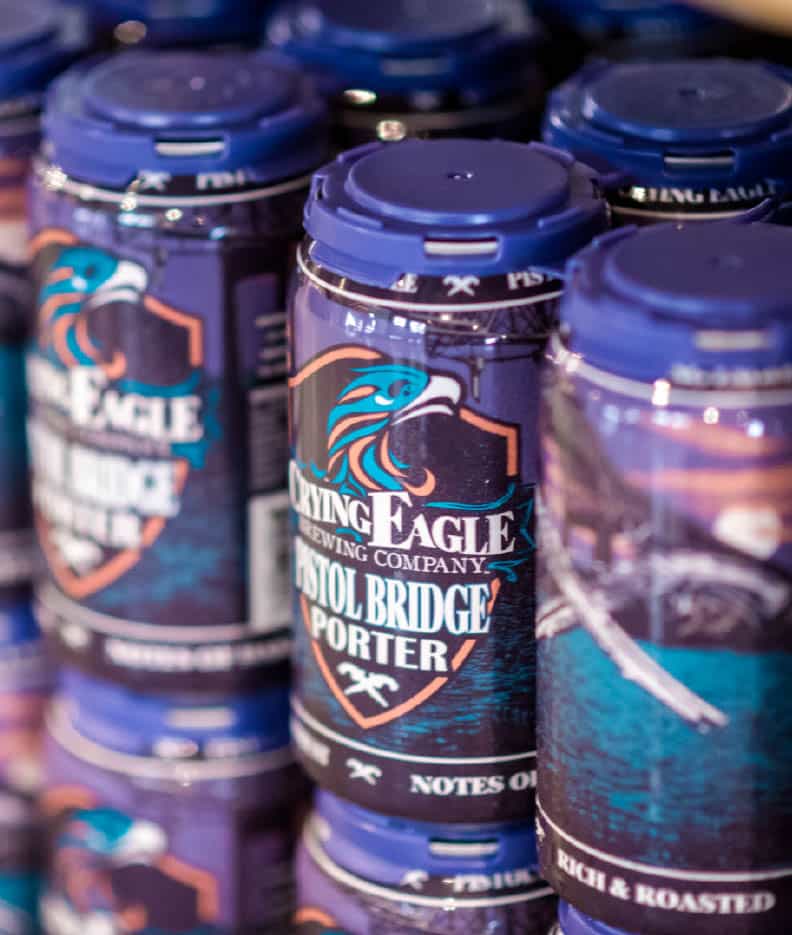
One element that has been wanted by both the patrons and management from the beginning is a restaurant. But that was something that, until recently, they weren’t legally allowed to have.
Louisiana Alcohol and Tobacco Commissioner Juana Marine-Lombard had, not long after her appointment, issued interpretations of certain elements of the state regulations in ways that were not favored by the industry at large.
With the help of Baton Rouge-based lobbyist Cary Koch, who took up the position of executive director of the Louisiana Craft Brewers Guild, brewers across the state soon found themselves once again able to pursue other ventures in their facilities, including the ability to have restaurants on-site. Once this clarification was issued, Crying Eagle began construction on The Bistro within 30 days.
“We want to build our brand, and you do that by creating amazing experiences. We do that by having fun, unique and interesting things going on at the brewery. That is not an effort to take business away from our retail partners. Not at all. It’s to build a loyal following in our community, so that wherever they go, they are buying Crying Eagle beer. People in our community are starving for art and culture and fun things to do, and we need their support. You may have tried what Crying Eagle was, but we need you to try who we are now.
“Now we can have corporate events at our brewery, we can market our business like any other business, and we can finally have a restaurant [which opened Jan. 10]. And I think people are going to be blown away by it. Our signature pizza will be called The Crying Eagle, the dough for which will include a lot of the spent grain from our beer-making process. It’s got olive oil, bacon, goat cheese, mozzarella, local honey and rosemary. It’s original, it’s delicious, and we know it’s going to be a home run.”
Another big development for the brewery, and brewers nationwide, is coming down straight from Washington, D.C. The much-debated Tax Cut Bill, signed into law on Dec. 22 and active as of Jan. 1, included a provision that the craft brewing industry has been working on for nearly a decade. That provision will cut the federal excise tax on craft brewers in half, from $7 to $3.50 per barrel on their first 60,000 barrels produced.
This is equal to a roughly $11,000 annual break for most small breweries, and up to over a quarter million-dollar break for the largest producers.
“Throughout the entire country, there are only a couple dozen that produce at that capacity. 60,000 barrels is an absolute ton of beer. Only the likes of Abita, Shiner and Sweetwater in Atlanta are doing that much volume in the Gulf Coast region, so this really is in an effort to help (smaller breweries). We’re a heavily regulated and taxed industry, and we all have the mindset and determination to go out and make an impact in our community, because it is our home market and our home state that most support who we are and buy our products, and we all want to be able to give back and remain profitable.
“For guys like me, Parish Brewing, NOLA, Urban South, and guys up north like Flying Tiger, this tax cut allows a little breathing room to offer competitive wages and benefits, and also make capital improvements that will better the quality of our beer. Once you start making better beer, more people start drinking it, and the more your market share starts to increase, which, in turn, leads to an increased demand for craft beer. You may start to see new brew pubs, and maybe even new breweries come up over the next few years as market share continues to increase.”
And it’s already a pretty impressive market share. In 2016 (2017 totals will likely be released late in the first quarter of this year), craft beer sales were 21 percent of the beer market nationwide. That’s despite the trend of craft acquisitions by larger corporate entities, which has been growing for the last several years.
So, with new momentum for the brewery, thanks to directives in Baton Rouge and Washington; an eager market at large; and through lessons learned from the hurdles of the brewery in its fledgling days, where does that leave Crying Eagle today? Well, with a new look and new brews that Avery says are part of the rebirth of Crying Eagle Brewing Co.
“Our company is all but starting over in January of 2018. We are now fully rebranded in all four styles in our current line-up of beer in brand new packaging. We have three new styles of beer. We kept the Ready to Mingle Belgian Single. That was a national award-winning beer. So, we added things we knew people wanted: an easy drinking lager that we called Louisiana Lager; our porter, which was one of our bestselling beers at the brewery, named Pistol Bridge Porter; and we just saw the arrival of our new IPA, called Hop Blooded.

“And it’s a beer that has a great story. As we were getting ready to do our inaugural brew, we got a call from the rock band Foreigner saying, ‘Hey we want to come and hang out with you guys.’ So, I told them they should come brew the IPA with us. So that’s what they did, and that’s where we got the name. As an homage to having those guys there when we brewed the first batch, we called it Hop Blooded. It’s not a “Foreigner” beer, but it’s certainly a nod to having them with us when this beer was born.”
Such a bevy of changes would hardly seem complete without at least a little fanfare, so Avery and crew brewed up a party as unique and fun as they are with the Hop Blooded Launch Party and Pub Crawl they hosted on Jan. 12. This cross-city crawl kicked off with a sign-up at the Crying Eagle Brewing Taproom, where guests were able to get their first taste of the new Hop Blooded and pick up their first six-pack.
The first 15 to sign up netted themselves a free t-shirt, a free pint of Hop Blooded at each location, and transportation to each destination, which included Darrell’s, Rikenjaks, Luna Bar and Grill and, finally, Sloppy’s Downtown.
And while there may be brave new days ahead for the Eagle and her crew, Avery adds that it is, in its own way, getting back to the very start, and back to what it always should have been.
“This is what we needed from the very beginning. We needed these styles of beer. We needed these can designs, we needed this restaurant and an amazing venue, which we’ve always had. But we now have an amazing retail shop, and we’re now doing more sophisticated beers, like our barrel aging programs with Bayou Rum. We’ve got beer aging in their barrels right now.
“That is the only way craft beer grows. You have to put out better product. The reason that craft beer has been stagnant for so long is because it’s been average beer. These breweries are now picking up their game, and you’re starting to see better beer put out there and, as a result, more people are drinking beer. More people drinking it creates more demand. More demand means more beer coming out on the market. We’re excited to be a part of that.”



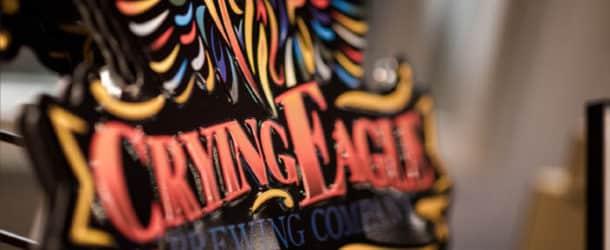
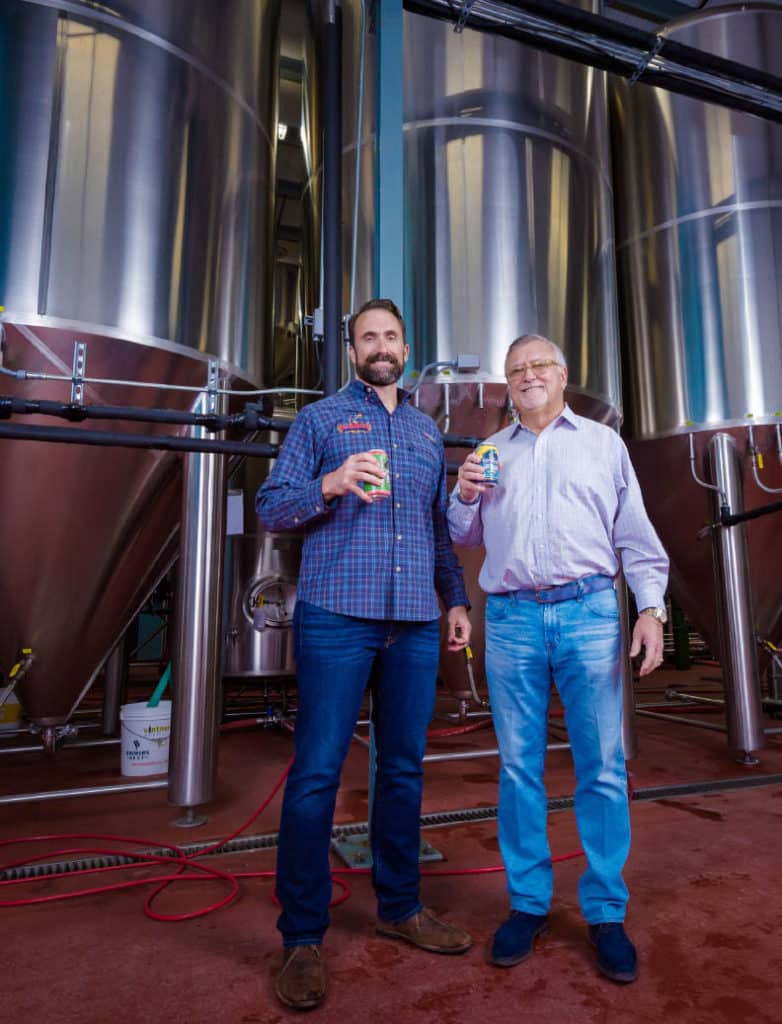

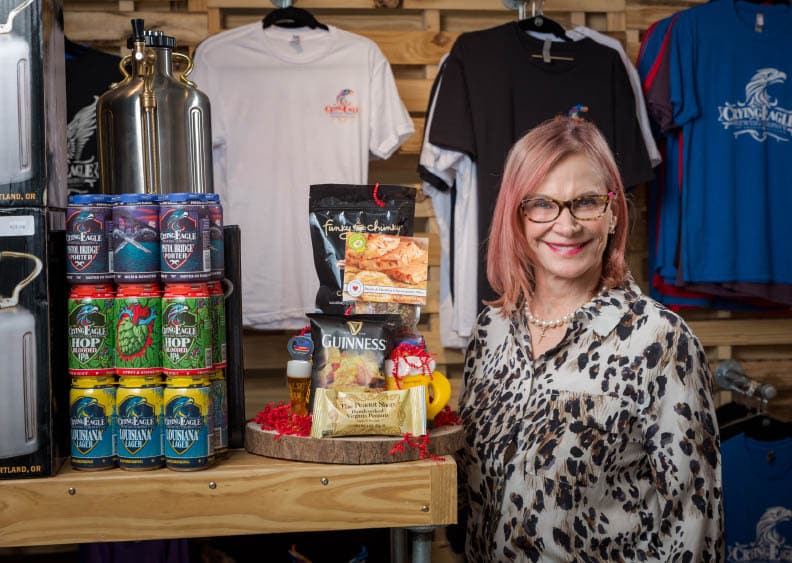












Comments are closed.